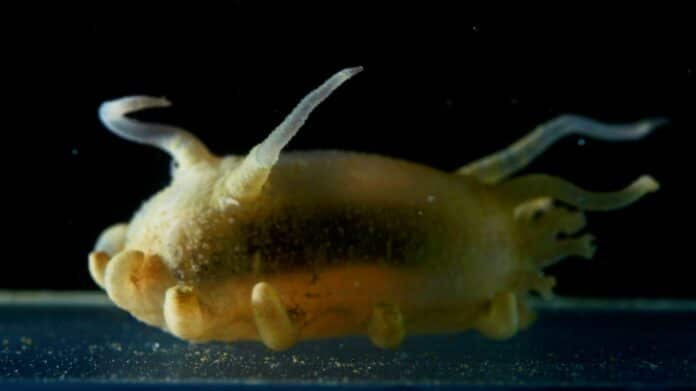In a new textbook published November 10, 2023- The World of Sea Cucumber- a group of scientists explains how sea cucumbers evolved from primitive species that dominated the Jurassic seas 180 million years ago to present-day generations.
They reveal the existence of previously undiscovered luminescence in ten deep-sea species for the first time. Among these recent findings is a member of the order Molpadia, previously believed to be non-luminous.
The group demonstrates the differences between the drab, shallow-water sea cucumbers and their brightly glowing, deep-sea cousins. Full-color photos captured with a specialized camera on a deep-sea probe showcase their unique colors and highlight the organisms’ previously underestimated brightness.
Nagoya University professor Manabu Bessho-Uehara said, “As deep-sea exploration and development continue, information on their biodiversity and ecology, such as this book, becomes important as it allows us to assess the impact of human activities on deep-sea ecosystems.”
“Heavy metal pollution from the mud discarded during drilling operations and motor-derived noise disrupting sound communication are important problems. However, the effects on organisms when bioluminescence signals are disturbed, such as when light is obscured by drilling mud, have not been examined. It is necessary to clarify the importance of bioluminescence on the deep-sea floor and find measures that will lead to sustainable development.”
“This research sheds light on the mysterious bioluminescent abilities of sea cucumbers that await exploration in the deep sea’s darkness. It brings us one step closer to understanding their diversity and evolution mysteries. Understanding deep-sea ecosystems and interactions among organisms will lead to a better understanding of life on Earth itself.”
